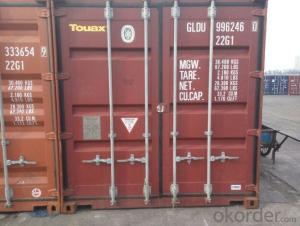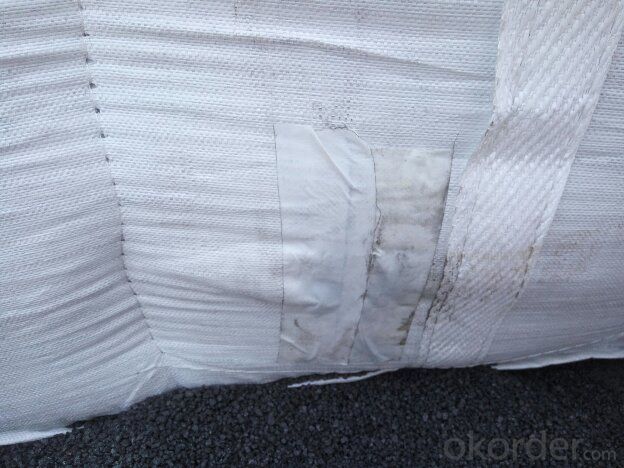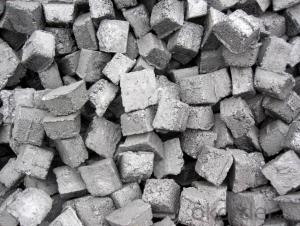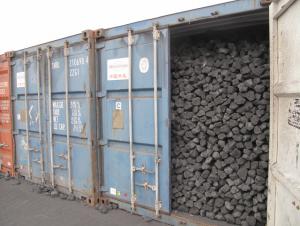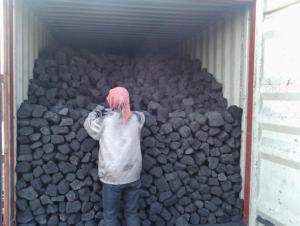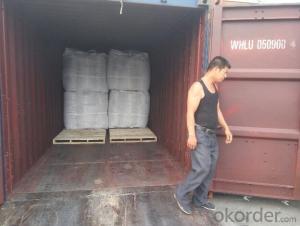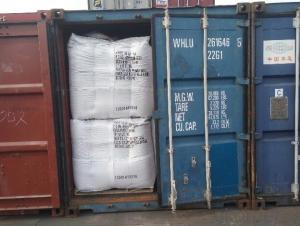10% Ash Foundry Coke with Mositure 5%max
- Loading Port:
- Shanghai
- Payment Terms:
- TT OR LC
- Min Order Qty:
- 20.4
- Supply Capability:
- 1004 m.t./month
OKorder Service Pledge
OKorder Financial Service
You Might Also Like
Brief Introduction
Foundry Coke is the main fuel of melting iron in the oven. It can melt the materials in the over, make the iron reach great heat, and keep good air permeability by sustain stock column. Thus, the foundry coke should have the characteristics of big block, low reactivity, small porocity, enough anti-crush strengh, low ash and low sulphur.
The coke handled by our cooperation is made from superior coking coal of Shanxi province. Provided with the advantages of low ash, low sulphur and high carbon. Our coke is well sold in European, American, Japanese and South-east Asian markets. Our owned Coke plant are located in Shanxi Province and supplying of you many kinds of coke.
we supply Foundry Coke long-term, its characteristic is best strength, low sulfur and phosphorus,thermal stability.
Specifications:
ASH % | 8% max | 10% max | 12% max |
V.M.% MAX | 1.5% max | 1.5% max | 2% max |
SULFUR % | 0.65% max | 0.65% max | 0.7% max |
MOISTURE | 5% max | 5% max | 5% max |
Size | 80mm-120mm,80-150,100-150mm, or as request | ||
Features
1. Our quality is always quite good and stable which is producing and packing according to customers' requirements.
2. Putting Client profile into first, achieved mutual benefit.It is more and more widely-used
3. Good partner on business. It's a good and wise choice for customers' to purchase from us. It's our great honor to cooperate with you.
4. We can supply documents as follows:
- bill of loading,
-Invoice,
-Packing List
-Insurance
-standard inspection pictures of the container as specified by INSPECTORATE
-or more requested by buyer.
Pictures
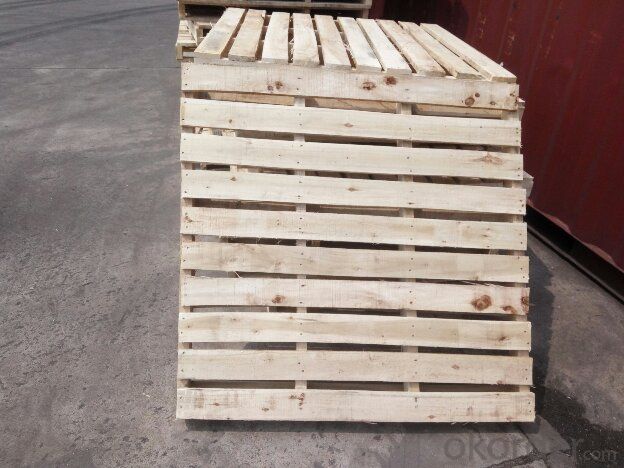
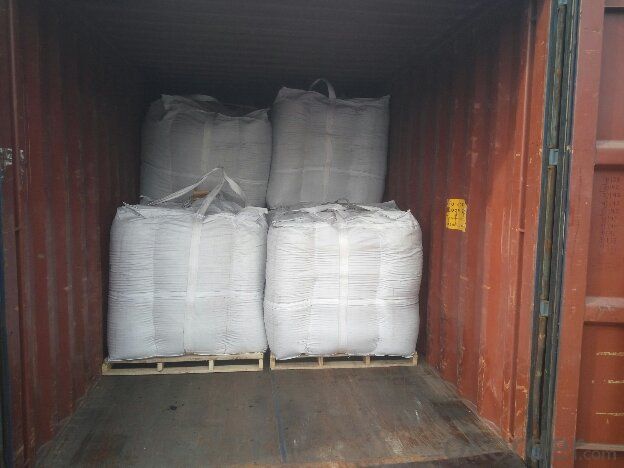
FAQ
1. What is the packing?
In 25kg bag/ In jumbo bags without pallet/ Two jumbo bags with one pallet/ or as customers’ request
2. What is the production capacity?
10 thousand tons per month
3 What is payment term?
Irrevocable LC at sight/ 20% down payment by T/T and 80% against BL copy byT/T/ or to be discussed
4 What is the service?
We will send sample to the third party(CIQ, CCIC, SGS,BV or to be discussed) for checking, and present the test certificate and loading repot of shipment.
- Q: How many points can Yongan change for 1 carbon coins?
- Every Thursday at 19:00, carbon points change for carbon coins, 19:30 carbon coins exchange gifts
- Q: What are the impacts of carbon emissions on the spread of infectious diseases?
- The spread of infectious diseases is significantly impacted by carbon emissions. When fossil fuels like coal, oil, and natural gas are burned, they release large amounts of carbon dioxide (CO2) and other greenhouse gases into the atmosphere. These emissions contribute to climate change, which in turn affects the distribution and transmission of various infectious diseases. Changes in temperature are one of the main ways carbon emissions influence the spread of infectious diseases. As global temperatures rise, it creates favorable conditions for disease-causing agents and their vectors to survive and multiply. For example, warmer temperatures can expand the geographic range of disease-carrying insects like mosquitoes, which transmit diseases such as malaria, dengue fever, and Zika virus. Carbon emissions causing climate change can also disrupt ecosystems and alter the behavior of animals that serve as hosts or reservoirs for infectious diseases. Changes in migration patterns, breeding cycles, and hibernation can affect disease dynamics, making them harder to control. For instance, warmer temperatures may lead to an increase in tick populations, raising the risk of tick-borne diseases like Lyme disease. Moreover, carbon emissions contribute to air pollution, which negatively impacts respiratory health. Pollutants like particulate matter and nitrogen dioxide weaken the immune system, making individuals more vulnerable to respiratory infections such as influenza and pneumonia. These pollutants also worsen respiratory symptoms in people already infected with respiratory diseases. The effects of carbon emissions on the spread of infectious diseases extend beyond humans. Changes in climate patterns can disrupt agricultural systems, resulting in food insecurity and malnutrition. These conditions weaken the immune systems of vulnerable populations, making them more susceptible to infectious diseases. Recognizing the link between carbon emissions and the spread of infectious diseases is crucial in order to mitigate their impacts. Reducing carbon emissions by transitioning to cleaner energy sources and adopting sustainable practices can help mitigate climate change and limit the expansion of disease vectors. Additionally, investing in public health infrastructure and surveillance systems can improve our ability to detect and respond to outbreaks, minimizing their spread and impact on human populations.
- Q: How does carbon affect the formation of tsunamis?
- Carbon does not directly affect the formation of tsunamis. Tsunamis are primarily caused by underwater earthquakes, volcanic eruptions, or landslides. Carbon, in the form of carbon dioxide (CO2), is a greenhouse gas that contributes to global warming and climate change. While carbon emissions and the resulting climate change can impact ocean temperatures and sea levels, they do not directly trigger the formation of tsunamis. However, it is important to note that climate change can indirectly influence the intensity and frequency of natural disasters, including tsunamis, through its impact on oceanic and atmospheric conditions. Rising sea levels caused by melting glaciers and polar ice can potentially increase the destructive power of tsunamis by allowing them to reach further inland. Additionally, climate change can affect the frequency and magnitude of earthquakes and volcanic activity, which are the primary triggers of tsunamis. Therefore, while carbon emissions do not directly affect tsunami formation, their impact on climate change can indirectly influence the factors that contribute to the occurrence and severity of tsunamis.
- Q: What are the different types of carbon-based plastics?
- There are several types of carbon-based plastics, including polyethylene (PE), polypropylene (PP), polyvinyl chloride (PVC), polystyrene (PS), and polyethylene terephthalate (PET). Each of these plastics has unique properties and applications, making them suitable for various industries and products.
- Q: How does carbon affect the ozone layer?
- Carbon does not directly affect the ozone layer. However, certain carbon compounds, such as chlorofluorocarbons (CFCs) and hydrochlorofluorocarbons (HCFCs), can indirectly contribute to the depletion of the ozone layer. These compounds contain chlorine and bromine atoms, which are released into the atmosphere when the compounds are broken down by sunlight. Once in the atmosphere, chlorine and bromine atoms can catalytically destroy ozone molecules, leading to a thinning of the ozone layer. When a chlorine or bromine atom comes into contact with an ozone molecule, it reacts with it, breaking it apart and forming a chlorine or bromine oxide molecule and a regular oxygen molecule. The chlorine or bromine oxide molecule can then react with another ozone molecule, continuing the cycle and depleting the ozone layer. While carbon itself does not directly contribute to ozone depletion, the production and release of carbon compounds like CFCs and HCFCs result from human activities. These compounds were widely used in various industries, such as refrigeration, air conditioning, and aerosol propellants, until it was discovered that they were harmful to the ozone layer. The Montreal Protocol, an international treaty signed in 1987, aimed to phase out the production and use of these ozone-depleting substances. Reducing carbon emissions, however, is crucial in addressing another environmental concern – climate change. High levels of carbon dioxide and other greenhouse gases in the atmosphere trap heat, leading to global warming. This poses various threats to ecosystems and human societies. By transitioning to cleaner and more sustainable energy sources and implementing measures to reduce carbon emissions, we can tackle both ozone depletion and climate change, safeguarding the health of our planet.
- Q: Carbon content of fly ash and fly ash roasted vector what is the relationship?
- The loss of coal ash is mainly caused by the incomplete combustion of coal, the remaining carbon is introduced, and the carbon content is high, then the amount of burning is high. From the color, it can be clearly seen that the black fly ash has high carbon content and high ignition loss. Based on the molecular weights of C and CO2, a preliminary estimate is made.
- Q: Just come out to work, do activated carbon, often see carbon materials and carbon materials, I do not know what the difference, trouble you!
- Carbon refers to elements. Carbon materials usually refer to materials that contain carbon and are the main bodyCarbon is a carbon containing substance of no composition and property consisting of carbon elements
- Q: What role does carbon play in photosynthesis?
- Carbon plays a crucial role in photosynthesis as it is the primary building block for organic molecules. During photosynthesis, carbon dioxide is taken in by plants and converted into glucose, a simple sugar, using energy from sunlight. This glucose is then used to synthesize more complex carbohydrates, such as starch, cellulose, and other organic molecules, which are essential for plant growth and development.
- Q: What are the effects of carbon emissions on the stability of alpine ecosystems?
- The effects of carbon emissions on the stability of alpine ecosystems are significant and far-reaching. Carbon emissions, primarily in the form of carbon dioxide, contribute to the greenhouse effect and subsequent climate change. This leads to a series of impacts that directly affect the stability of alpine ecosystems. One of the most noticeable effects is the increase in global temperatures. As temperatures rise, glaciers and snow caps in alpine regions melt at accelerated rates. This has a profound impact on the availability of freshwater resources, as alpine regions are often the source of major rivers and lakes. Reduced water availability not only affects the survival of plant and animal species but also impacts human populations relying on these water sources for agriculture, drinking water, and hydropower generation. Another consequence of carbon emissions is the alteration of precipitation patterns. Climate change disrupts the balance of rainfall and snowfall in alpine ecosystems, leading to more frequent and severe droughts or intense rainfall events. Such changes in precipitation patterns can result in soil erosion, landslides, and the overall destabilization of alpine terrain. This poses a threat to the survival of alpine flora and fauna, as well as the loss of vital habitats and biodiversity. Furthermore, carbon emissions contribute to the acidification of alpine lakes and rivers. Increased carbon dioxide in the atmosphere dissolves in water bodies, forming carbonic acid. This acidification negatively affects aquatic organisms, such as fish and amphibians, by impairing their reproductive abilities, altering their behavior, and even causing mortality. It also disrupts the delicate balance of alpine freshwater ecosystems, leading to a decline in species diversity and ecological resilience. Lastly, carbon emissions can indirectly impact alpine ecosystems through the spread of invasive species. Climate change creates favorable conditions for the expansion of non-native plant and animal species into higher elevations. These invasive species can outcompete native flora and fauna, disrupt ecological interactions, and ultimately lead to the displacement or extinction of native species. This disrupts the natural balance of alpine ecosystems and compromises their stability. In conclusion, carbon emissions have profound effects on the stability of alpine ecosystems. These emissions contribute to the melting of glaciers, alteration of precipitation patterns, acidification of water bodies, and the spread of invasive species. These impacts disrupt the balance of alpine ecosystems, leading to the loss of biodiversity, habitat degradation, and reduced availability of freshwater resources. Urgent action to mitigate carbon emissions is crucial to preserve the stability and functioning of these fragile ecosystems.
- Q: other parameters are figured out, the difference is only in the carbon and carbon is not very clear, just know that they are winding mode is the opposite, there are two kinds of most printers can be used, what is the difference between the performance of them? Two can use the printer in the selection of the best carbon or carbon? Why? Please cite several models as an example.Please answer in your own words. Don't factor,
- In fact, to teach you a simple way to distinguish between internal and external carbon, carbon, label paper dip ribbon, with black on the outside of the outer side is carbon, carbon is in inside, no performance difference, now generally used is the most carbon, such as the machine is to use carbon is better, because the wound is not the same, sometimes loose.SATO machine with carbon is better, and the CITIZEN printer inside and outside carbon can be used, in addition to machine limitations, not what the difference is too big, the quality of internal and external carbon ribbon is the same.
Send your message to us
10% Ash Foundry Coke with Mositure 5%max
- Loading Port:
- Shanghai
- Payment Terms:
- TT OR LC
- Min Order Qty:
- 20.4
- Supply Capability:
- 1004 m.t./month
OKorder Service Pledge
OKorder Financial Service
Similar products
Hot products
Hot Searches
